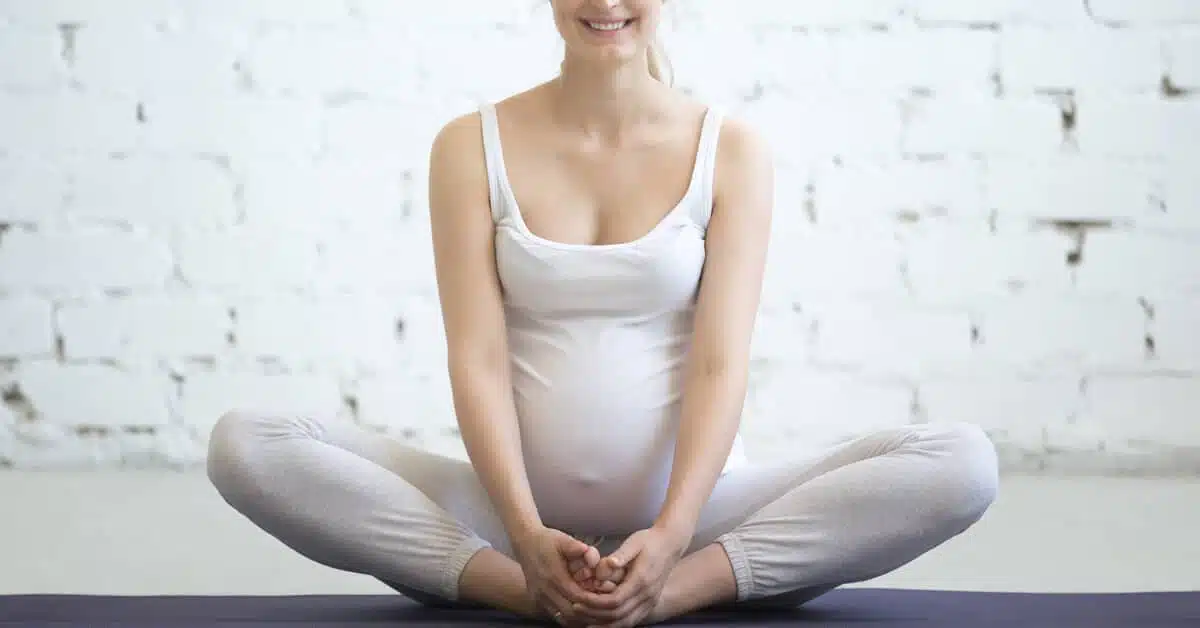Can a pregnant woman still do sports? If you look at the many courses taken in pregnancy gymnastics, the answer is clearly yes. Even shortly before the birth, a pregnant woman can still keep fit with her child. According to information from the German Sports University in Cologne, a study found that the heartbeat in the fetus rises slightly from 140 beats per minute to 160 during exercise, but then quickly calms down again. Training with an unborn child is now also recommended by many doctors. In the following, we would like to inform you about the benefits of exercise during pregnancy and when pregnant mothers should actually refrain from exercising.
What are the benefits of exercise for pregnant women?
Regular exercise, even during pregnancy, keeps the mother physically fit, as proven by a recent study at Hohn Hopkins University in Baltimore. Sporting activity during pregnancy promotes strength, endurance and strengthens the heavily used muscles during this phase of life. Intensive workouts during pregnancy can prevent back problems and water retention, and can also help reduce emerging depression. Excessive weight gain can also be prevented by exercise during pregnancy. Nevertheless, high-risk pregnant women should always discuss their planned training with a doctor, as he or she can use his or her experience to prescribe the type of sport and intensity. You should also not underestimate the mental effect, as the feeling of belonging in the group is promoted in sport and can therefore also ensure a better self-esteem in this life situation.
What sports are suitable for the pregnant woman?
Expectant mothers can do cardio as well as gymnastics or strength training during their pregnancy, as long as the intensity remains moderate. Walking, cycling or swimming are particularly suitable as endurance sports, but gymnastics such as Pilates or yoga are also recommended training sessions. Many doctors even recommend that the abdominal and pelvic floor muscles should be exercised during and after pregnancy, so that the abdominal muscles can be brought back into shape after the strains of pregnancy. However, be careful not to over-exercise the abdominal muscles after the 20th week of pregnancy. Sit-ups or crunches should not be performed from this point on. Isometric exercises, in which the muscles are tensed without movement, are recommended. The oblique and lateral abdominal muscles can be trained throughout pregnancy without any problems. Athletic mothers may also jog with their fetus or sweat in fitness classes. On the other hand, sports that consist of jumping and intense physical contact with an opponent should be avoided. Prohibited in any case for pregnant mothers are all kinds of combat and high-risk sports, because these sports involve the risk of a fall, which can injure the mother and unborn child.
Individual training is important
In pregnant mothers, the physique changes at a rapid pace during the nine months of pregnancy, and sports activities should be adjusted accordingly. The first three months are often characterized by nausea, so especially during this period should be disciplined sports activity. This ensures that nausea, bad mood and emerging depression can be reduced. If the body has become accustomed to the constant sports activities of the first three months, then the next three months can be tackled more easily. You should remember, however, that during pregnancy the hormone progestin ensures that the joints and ligaments remain loose so that the pelvis remains flexible for the expected birth. However, loose joints also ensure that many movement patterns become more unstable and prone to injury. It is therefore advisable to wear high-quality athletic shoes during exercise to maintain stability in movement. In addition, the pregnant woman should pay attention to intensity and workload in her training sessions so that an injury is not unintentionally caused. In the last trimester of pregnancy, the size of the abdomen automatically ensures that the training sessions must be reduced. Training that is too intense then causes pain in the knees, pubic bone and pelvis, so during this period you should switch to sports that are easy on the joints. Ideal for this are sports such as swimming or water gymnastics, since in these sports a part of the body weight can be relieved by the water. Loose and moderate movements in the water can even be performed until shortly before the birth.
When should you avoid exercise during pregnancy?
There are certain life situations and physical ailments that may mean that the pregnant mother must definitely seek the advice of a doctor before starting any exercise. Especially if you have already had a miscarriage or a premature birth, you should seek the advice of a doctor as a preventive measure. The risk of premature labor or a low-lying placenta can also be arguments against exercise during pregnancy. Pregnant women should definitely avoid exercise if they have had heavy spotting, back or hip pain, or are expecting multiples. High blood pressure or other illnesses can also be a reason for the doctor that the pregnant mother must refrain from sports.
The fitter, the easier the birth
Childbirth is a strenuous physical and psychological life situation for every woman. Sport during pregnancy can therefore significantly counteract the physical stress for labor and birth. Sporting activities strengthen and stretch muscles, ligaments and tendons, which are under particular strain in pregnant women. Even the lost self-esteem is restored by sports, so sports in pregnancy is actually only recommended.
Omega 3
Do something good for your body. Support your pregnancy with high-quality fatty acids (fish oil). This will provide your body with an optimal supply. Not for nothing are omega-3 fats as well as various amino acids classified as essential. In addition to hormone synthesis, these special fats also regulate growth, heal wounds, promote memory and strengthen the immune system.
Omega 3





